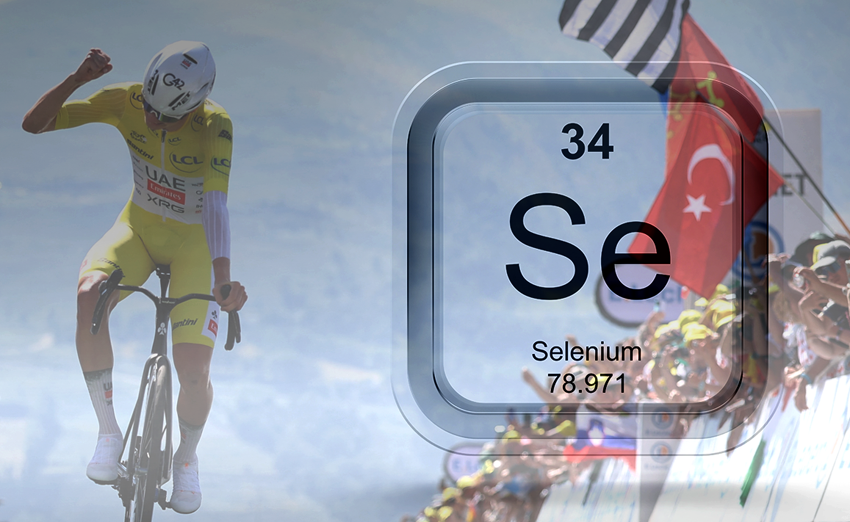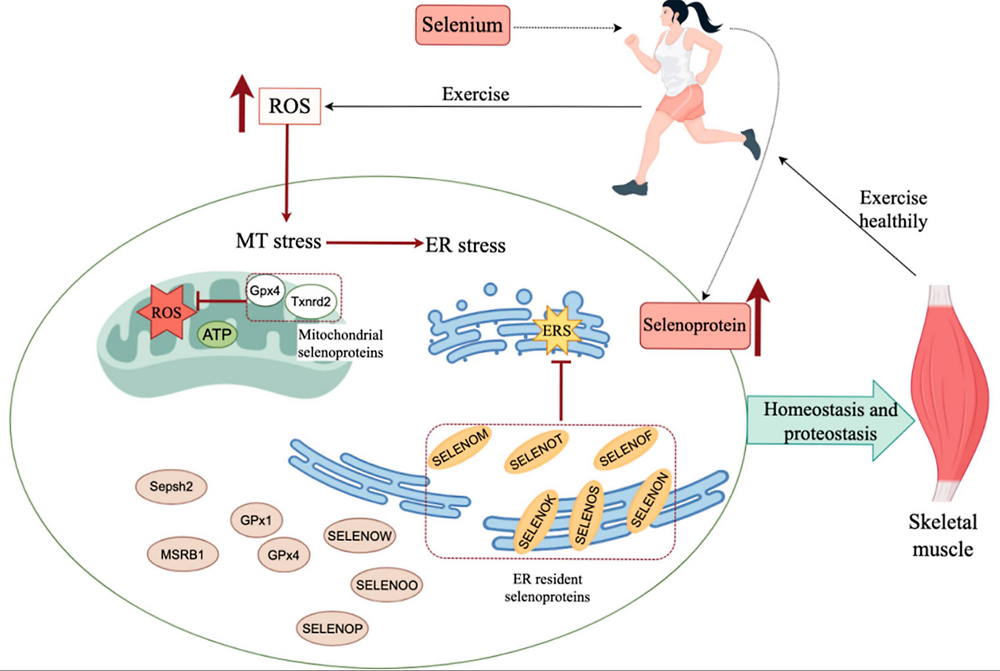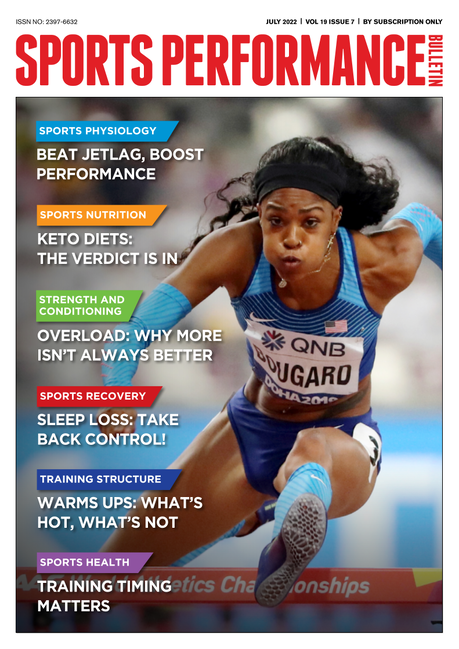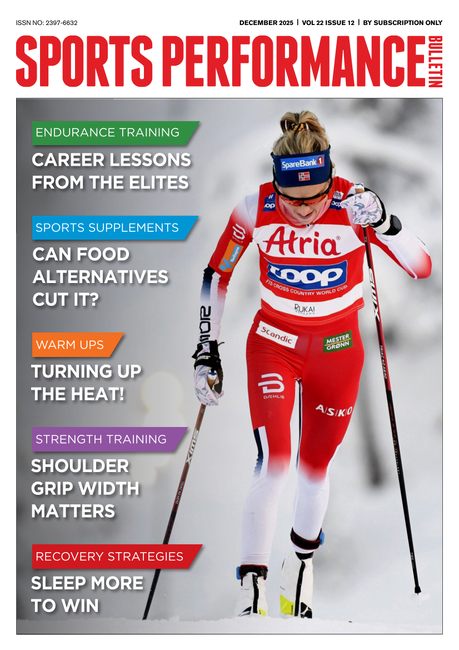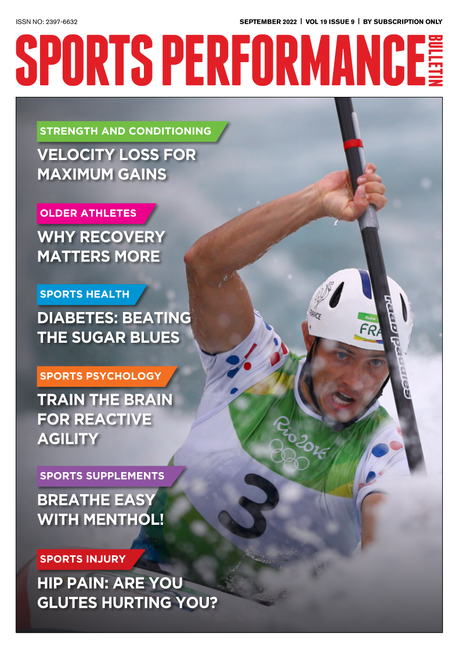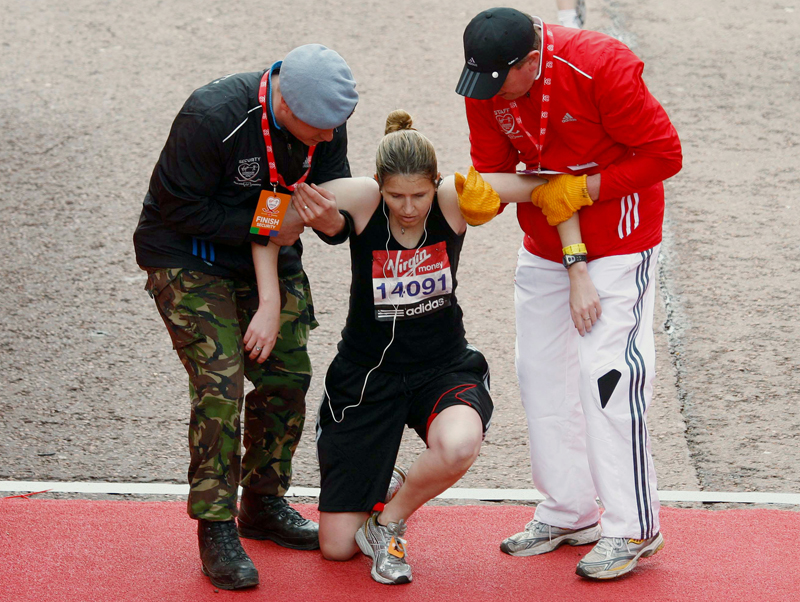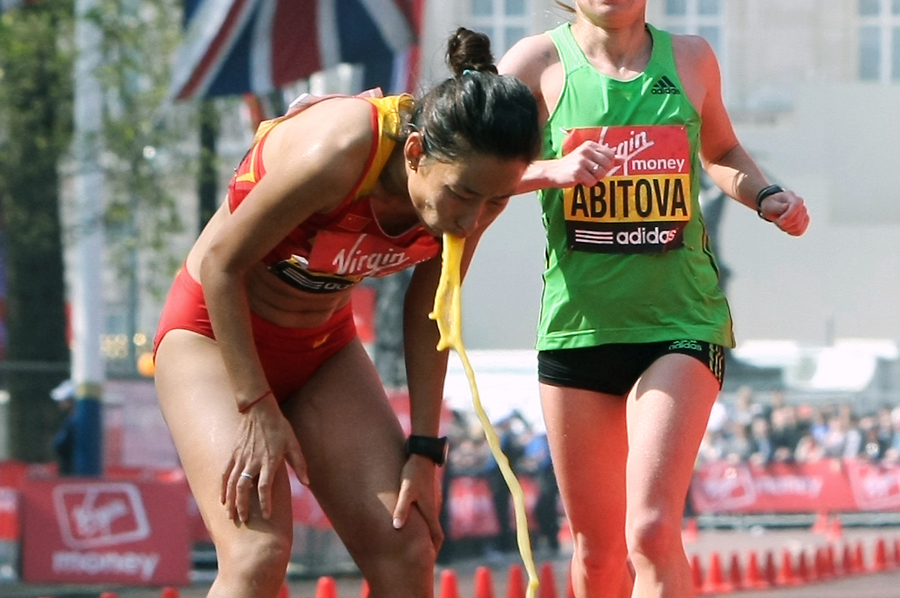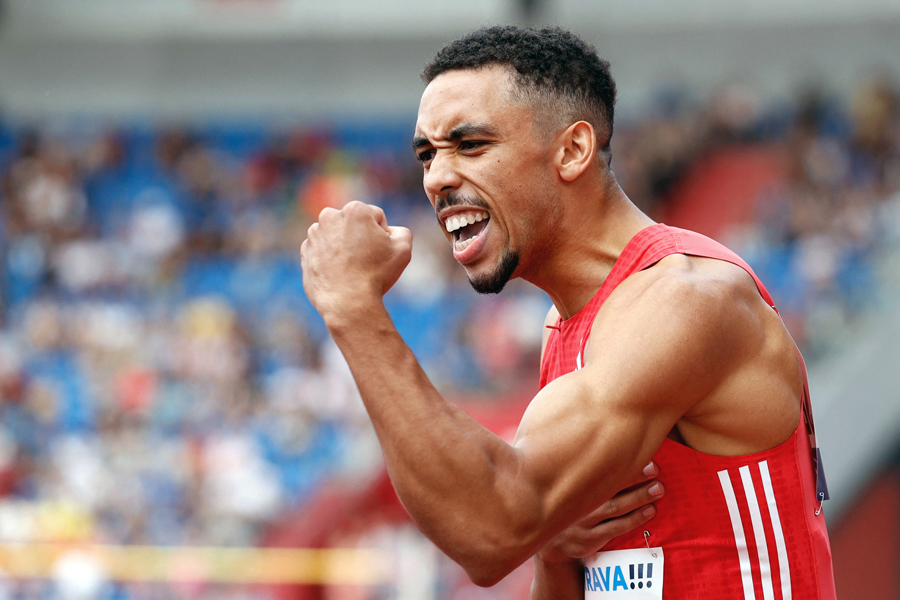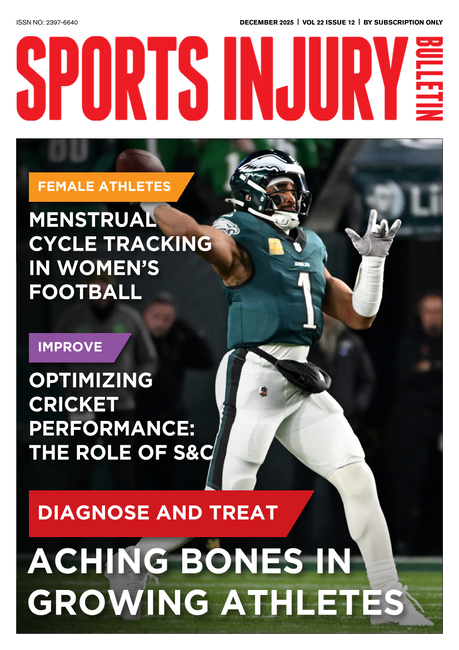You are viewing 1 of your 1 free articles. For unlimited access take a risk-free trial
Selenium: the overlooked nutrient for athletes?
The trace mineral selenium is only needed in tiny amounts, but is no less important for that. SPB looks at new research on why selenium matters for athletes, and how to ensure its intake is optimized
When it comes to sports nutrition, much time and research is directed toward optimizing the intakes of key nutrients needed for performance. As regular readers will know from the previous articles (referenced here with links), these nutrients include carbohydrate, which serves as an ideal energy source during longer or high-intensity endurance events, protein for muscle growth and post-exercise recovery, and of course fluid (water), where even a small shortfall can negatively impact performance (see this article for an in-depth discussion). Fat intake also matters to athletes, not least because too much dietary fat can displace the protein and carbohydrate needed for performance/recovery, and also because athletes need to ensure an adequate intake of the essential fats (most notably omega-3), which are important for athlete health immunity and even performance (see this article).
Macro vs. micronutrients
The dietary nutrients listed above are commonly referred to as ‘macronutrients’ because they are needed in relatively large amounts every day. A shortfall or imbalance of any of these nutrients can lead to a rapid negative performance and or/recovery impact (as any athlete who’s ‘hit the wall’, struggled to recover or become dehydrated during exercise will know!). Because these macronutrients are needed in the range of a few grams to hundreds of grams per day every day, an athlete’s intake and nutrient status is shaped by the mainstay foods he or she consumes on a day-to-day basis. Perhaps more importantly and because of this, athletes are generally acutely aware (or should be!) as to the overall balance and adequacy of their macronutrient intake.
However, in addition to the macronutrients, there’s a whole class of other nutrients - so-called ‘micronutrients’ that are essential for health and performance. Although only needed in the range of a few millionths of a gram (mcg) to fractions of one gram, their role in the body’s biochemistry and ability to perform is no less important. Familiar examples of these nutrients include (links show referenced articles):
· Iron – a mineral needed to synthesize hemoblobin in red blood cells (essential for the transport of oxygen around the body).
· Zinc – a mineral needed to activate key enzymes involved in protein turnover and synthesis in the body. [NB: enzymes can be thought of as ‘biochemical sparkplugs’, which enable essential biochemical reactions to occur in cells that would otherwise take place too slowly or not at all).
· Magnesium – a mineral needed for the activation of key enzymes required for the release of energy via the ATP energy system.
· B vitamins - needed for key enzymes required for a vast number of biochemical reactions in the body, particularly in the brain, DNA synthesis and repair, energy release, protein turnover and synthesis of signalling molecules.
· Vitamin D – needed for immunity, muscle function and bone health maintenance.
Unlike the macronutrients where athletes tend to notice quite rapid changes (deterioration) if these nutrients are lacking or become imbalanced, a shortfall of one or more micronutrients in the diet is a far more insidious process, with changes in performance taking many weeks or month to manifest. This makes identifying a micronutrient deficiency more difficult, especially as the deficiency symptoms may initially be quite diffuse and non-specific – for example, feeling ‘washed out’, an increased tendency to suffer from illness and infection, poorer recovery, unexplained aches and pains, poorer hair and skin condition etc.
To complicate matters further, micronutrient deficiencies can easily develop under the radar; unlike fat, protein and carbohydrate contents, which are typically listed on labels, the micronutrient content of foods is not. Unless you are nutritionally knowledgeable, it might be difficult to ascertain whether you are consuming enough of these micronutrients in your diet. To make matters even more complicated, the levels of micronutrients in the same foods may vary dramatically, depending on where the food was cultivated and how it was processed before reaching your dining table. And to top it off, even if you suspect a micronutrient deficiency, getting hold of a lab test to confirm it may be expensive and logistically complicated!
Selenium – the forgotten micronutrient
When it comes to sports nutrition, the trace mineral selenium is often overlooked in terms of its importance for athlete health and function. Selenium is a trace mineral that is absolutely essential for human health, functioning as a critical component of ‘selenoproteins’. These proteins are key enzymes involved in various physiological processes in the body, including the antioxidant defense system, thyroid hormone metabolism, immune function, and reproductive health.
Research has shown that selenium, when incorporated into the selenoprotein known as glutathione peroxidase, protects cells from oxidative damage by neutralizing free radicals(1), which in turn helps reduce the risk of chronic diseases, such as cardiovascular disease and cancers. It also shows that selenium plays an important role in enhancing immune response by supporting T-cell function and antibody production(2) and plays a key role into converting a molecule known as ‘thyroxine (T4 – what a physician will prescribe where thyroid activity is low)’ to triiodothyronine (T3), which is the active thyroid hormone(3).
The recommended dietary allowance (RDA) for selenium in adults is around 55mcg/day (55 millionths of a gram(4), which is easily achievable IF the diet is wholesome and nourishing. Good food sources of selenium include Brazil nuts (exceptionally rich providing the 55mcg RDA in just 2-3 nuts!), and seafoods like tuna and shrimp (providing 100-200 mcg per 100g of food); meats such as chicken and beef are also decent sources, providing 20-50mcg per 100g(5). The content of selenium from carbohydrate sources is reasonable for whole grains such as whole grain wheat bread and whole grain rice and oats, typically providing around 15mcg per 100g(6); however, the selenium content of refined and processed foods (eg white flour products, sugary foods etc) tends to be very poor – for example a serving of cornflakes provides only 1mcg.
Selenium and athletes
As mentioned above, selenium exerts its physiological roles in humans through selenoproteins. Of the 25 selenoproteins identified thus far in mammals, two (GPX4 and TXNRD2) are classified as mitochondrial selenoproteins (found in mitochondria – the ‘energy factories’ within cells), while seven others (DIO2, SELENOF, SELENOK, SELENOS, SELENOM, SELENON, and SELENOT) are localized in the endoplasmic reticulum (the main body) of cells(7). These nine selenoproteins therefore have the ability to regulate mitochondrial and cell function.
Importantly for athletes, these selenoproteins are particularly prevalent in skeletal muscle, which means muscle is vulnerable to damage when there is a selenium deficiency. Research shows that a selenium deficiency can eventually lead to impaired muscle contraction and muscle weakness/wasting, which can progress to vascular injury within muscles as well as impaired physiological function(8,9). Given these facts, sports nutrition researchers have become increasingly interested in the role of selenium nutrition for athletes, and now a new research paper has been published on this topic.
New research
In this study, researchers from the University of Beijing carried out a review study on selenium nutrition and athletic performance, systematically reviewing all the previous data on this topic in order to come up with solid recommendations. Published in the journal ‘Nutrients’, this new study aimed to identify all the facets of selenium nutrition that could be relevant for athletes and make some best practice recommendations(10). Although these findings are rather technical in nature, the key points are summarized below in plain English.
What they found
Here are the key conclusions from the paper:
Antioxidant protection
Selenium mediates its physiological roles in the body predominantly through selenoproteins - not a single one, but a synergistic function of multiple selenoproteins. These selenoproteins include: seleno-W, seleno-P, seleno-M, seleno-T, seleno-K, seleno-H and glutathione peroxidise. Common to all of these seleno-proteins is the ability to deactivate harmful oxygen free radicals, which left unchecked, can harm the mitochondria and endoplasmic reticulum (ER) in muscle cells. As figure 1 shows, several key selenoproteins collaborate to eliminate excess oxygen radicals, alleviate mitochondrial and ER stress, and restore cellular balance when it is disrupted by oxidative stress induced by intense exercise. Optimizing selenium intake therefore can help maintain skeletal muscle homeostasis and balance, thereby enhancing exercise performance and fitness.
Figure 1: Synergistic effects of selenoprotein networks in skeletal muscle
Exercise creates reactive oxygen species (ROS) within muscles, which if left unchecked, can harm mitochondrial and ER function. However, if dietary selenium intake is optimized, the various seleno-proteins working synergistically can contain ROS production, enabling optimum muscle function and recovery. NB: ER: endoplasmic reticulum; ERS: endoplasmic reticulum stress; ROS: reactive oxygen species; MT:mitochondria.
Mitochondrial health
The vast bulk of energy required for exercise is released in the mitochodria of muscle cells. Given that mitochondria are the powerhouse for ATP synthesis, they are sometimes dubbed ‘energy factories’ within cells. Evidence shows that selenium profoundly affects the capacity and function of mitochondria, which, in turn, affects muscle health. Optimum dietary selenium enhances mitochondrial content in skeletal muscle, as evidenced by elevated mitochondrial volume, density, and respiratory complex activity in both in mammal and lab models. In particular, seleno-H enhances mitochondrial biogenesis, increasing the number of mitochondria, whereas seleno-N and seleno-W appear to enhance the function of the existing mitochondria. In addition, the presence of seleno-O in mitochondria helps contributes to free-radical deactivation.
Protein synthesis
Selenium deficiency is known to disrupt protein turnover by suppressing mTORC1 signaling. The mTORC1 signaling pathway is critical for helping to increase the activity of genes involved in protein synthesis. Anything that interferes with or suppresses the mTORC1 pathway therefore can reduce protein synthesis, leading to poorer post-exercise recovery and reduced strength levels (see this excellent article for a full discussion of this topic). It’s not known precisely which specific selenoproteins regulate skeletal muscle protein synthesis; however, in studies on mice that are bred to be seleno-W protein deficient, reduced protein synthesis in muscle cells has been observed, suggesting that the seleno-W protein plays an important role.
Calcium and muscle contraction
Calcium is a very important element in intracellular signalling in muscles, and can affect a variety of cellular physiological processes. In particular, signalling using calcium ions (Ca2+) is involved in skeletal muscle development and is directly related to the stores of Ca2+ It is known from animal studies that seleno-T is involved in the regulation of intracellular calcium concentration in muscles, and that a decrease in seleno-T can negatively affect the expression of two calcium channel signalling molecules (STIM1 and TRPC1), which are an important part of the overall signal that promotes muscle formation, balance, and regeneration. A shortfall of dietary selenium resulting in reduced seleno-T levels could therefore harm muscle contractile strength, growth and recovery via a different route to reduced levels of seleno-W discussed above.
Dosage and type of selenium supplements
As we explained earlier, ensuring an optimum intake of micronutrients is not always easy due to lack of labelling data and micronutrient variations in a given food due to differing soil selenium levels and/or any processing or cooking methods prior to consumption. Therefore, many choose to take supplements as an insurance policy. With selenium however, the dose and form of any supplement is quite critical. That’s because the form in which selenium is taken will affect the absorption, and taking too much is known to lead to toxicity – selenopathy – leading to symptoms such as gastrointestinal dysfunction, slow reactions, stiffness of limbs and hair loss, and in very severe cases, respiratory failure.
The European Food Standards Agency (EFSA) has set the dietary reference intake (DRI) of selenium for adults at 70μg per day, and the tolerable upper intake level (UL) at 255 μg per day(11). Meanwhile, the selenium DRI for Chinese residents is 60 μg per day, and the UL is 400μg per day. In the US, the RDI is 55μg per day while the UL is set at 400μg per day(12). Unlike some nutrients therefore, the window between ‘getting enough’ and ‘getting too much’ is quite narrow; in the case of EU recommendations, this is just a 3.6-fold difference between too little and too much – all of which means that any supplementation should be measured, and not on a ‘more must be better basis’!
Research also shows that the form of selenium supplementation is critical for the full benefits that selenium can deliver. As a rule of thumb, natural dietary selenium from seafoods, meats and other selenium rich foods will be best absorbed. When taking supplements, organic selenium such as seleno-methionine, selenium yeast and nano-selenium (SeNP) have better bioavailability to the body compared to inorganic selenium salts such as sodium selenite and sodium selenate, and are therefore preferred.
Summary
The role of selenium in muscle function is generally underappreciated. Recent research shows that for both mitochondrial function (endurance) and muscle growth/recovery (strength), ensuring an optimum day-to-day selenium intake is important. For athletes, this is best achieved by consuming a nutritious diet where seafood is eaten two to three times a week, and where the emphasis is on fresh, whole unprocessed foods – particularly where it comes to carbohydrate intake (ie stick to whole grain cereals, breads and rice where possible). Those who rely heavily on carbohydrate and protein drinks and gels should bear in mind that these kinds of products have been heavily processed so will be very poor sources of dietary selenium.
If you wish to top up your selenium intake, go for a supplement that delivers at least 55μg per day. This is typically the dose provided in a good multivitamin and mineral supplement. Don’t exceed a supplemental dose of 200μg per day, as when combined with dietary selenium, this may regularly put you above the upper limit. Finally, go for an organic form of selenium such as selenium yeast or selenomethionine; these are better absorbed and not significantly dearer than less well absorbed inorganic forms.
References
1. Lancet 2012. 379(9822), 1256-1268
2. Molecular Nutrition & Food Research2008. 52(11), 1273-1280
3. American Journal of Clinical Nutrition 1990. 52(6), 1175-1183
4. Institute of Medicine 2000. Dietary Reference Intakes, National Academies Press
5. British Journal of Nutrition 2004. 91(5), 661-672
6. National Institutes for Health Office of Dietary Supplements 2025 ods.od.nih.gov/factsheets/Selenium-HealthProfessional/#h3
7. Cell. Mol. Life Sci. 2009;66:2457–2478
8. Biol. Trace Elem. Res. 1998;62:7–16
9. J. Agric. Food Chem. 2024;72:284–299
10. Nutrients. 2025 May 31;17(11):1902
11. EFSA J. 2023;21:e07704
12. Nutrients. 2020;12:1790
Newsletter Sign Up
Testimonials
Dr. Alexandra Fandetti-Robin, Back & Body Chiropractic
Elspeth Cowell MSCh DpodM SRCh HCPC reg
William Hunter, Nuffield Health
Newsletter Sign Up
Coaches Testimonials
Dr. Alexandra Fandetti-Robin, Back & Body Chiropractic
Elspeth Cowell MSCh DpodM SRCh HCPC reg
William Hunter, Nuffield Health
Keep up with latest sports science research and apply it to maximize performance
Today you have the chance to join a group of athletes, and sports coaches/trainers who all have something special in common...
They use the latest research to improve performance for themselves and their clients - both athletes and sports teams - with help from global specialists in the fields of sports science, sports medicine and sports psychology.
They do this by reading Sports Performance Bulletin, an easy-to-digest but serious-minded journal dedicated to high performance sports. SPB offers a wealth of information and insight into the latest research, in an easily-accessible and understood format, along with a wealth of practical recommendations.
*includes 3 coaching manuals
Get Inspired
All the latest techniques and approaches
Sports Performance Bulletin helps dedicated endurance athletes improve their performance. Sense-checking the latest sports science research, and sourcing evidence and case studies to support findings, Sports Performance Bulletin turns proven insights into easily digestible practical advice. Supporting athletes, coaches and professionals who wish to ensure their guidance and programmes are kept right up to date and based on credible science.
